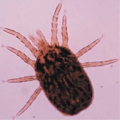@scarfvirgo0
Profile
Registered: 6 months, 1 week ago
What Is The Reason Why Coffee Filter Machine Are So Helpful When COVID-19 Is In Session The Importance of a Coffee Filter Machine It is recommended to use clean, fresh filtered water to achieve the best results. This allows the complex flavors of coffee beans shine through. You can also save money over the long run with a filter machine, as you only need to purchase paper filters and coffee ground. You can also reduce the cost of cleaning and disposal. Filtered Water Many espresso and coffee machines have a filter system. Others use reusable filters, like the one everyone loves, the Brita. Regardless of which you choose the most crucial thing to make the perfect cup is to use clean water. Filtered water isn't just good for your health it also improves the taste and consistency of the drink. The process of filtration involves pushing water through a screen comprised of tightly woven paper, or mesh that is bleached or not bleached. Bleached filters are made from chlorine or oxygen to get their white color, whereas unbleached filters are not made with chemicals. filter drip coffee prefer the flavor of a bleached filter, however, others find the coffee to be harsher or less flavorful. There are permanent coffee filter systems that include perforated metal sheets as well as fine plastic mesh. Porous ceramics and glazed porcelain sieves and porous ceramics can also be used to keep the coffee grounds in, while allowing water to pass. They might need to be boiled or rinsed regularly to function, but are cheaper and less wasteful. Filtered water is also a good choice for pour-overs and French presses, as it removes certain oils that can stain your final drink. These oils are crucial to the flavor and aroma of the brew. Eliminating them can make an enormous difference. A filter can also ensure that the coffee is brewed properly and leaves no grains. To get the best results, it is important to use a filter that fits the brewing method you are using. Aeropress for instance, employs a filter made of paper of a certain size to reduce the amount coffee oil and sludge in the final product. It is also essential to wash the filter with hot water before every use, since this removes any residual flavor from the paper and prevents it from tainting your coffee. Some people find that using a conical coffee filter gives a more rich, consistent brew than using a flat filter. This is because the conical filter permits the water to flow through the grounds in a uniform manner by following the flow of gravity. Temperature and pressure The temperature of water in the coffee filter machine is vital. It is important to ensure that the ratio of coffee to water is correct. The ideal temperature for brewing is between 88degC and 92degC. Certain machines have built-in thermometers, which let you to monitor the temperature. Other gadgets, such as thermometers for the gooseneck and infrared lasers can also assist you to get the perfect temperature for your brewing. The type of filter paper used in a coffee filter machine is another important factor. The most commonly used filter paper is paper, but there is a growing market for reusable filter sieves. They are made from materials such as metals that are woven, such as steel, aluminium, and copper, plastics, (including Makrolon/Exolon, and Tritan), porous ceramics, or porcelain, and can be placed in filter holders that are designed for cloth or paper filters. These filters are available in a variety of sizes and shapes. Some filters have a distinct "papery" taste that can be reduced by washing them in hot water prior use. Permeability can also be a significant factor in the final flavor of the coffee. This is influenced by the size of the filter, its shape, the type of material that it is made from, and the method of production. Cleaning your filter coffee maker is crucial, especially when you live in a region with hard water. This will ensure that the machine functions effectively and will avoid mineral deposits. Cleaning the grounds that have been used out of the filter basket and washing it is a part of your regular cleaning routine. Numerous studies have looked into the effects of varying the temperature of the brew on total dissolved (TDS) and extraction quality. The results show that a poor extractive quality and a high TDS can result in unpleasant sensory characteristics like bitterness, astringency, and sourness. However, the results from these studies do not compare the taste of coffee served at controlled serving temperatures and therefore cannot confirm if the sourness observed is due to an increase in TDS or a lower extractive quality. The bitterness or astringency that was observed in these studies could also be due to other factors, including the grind size of the coffee or the roasting level. Extraction During the brewing process, water extracts flavor compounds and oils from the coffee grounds that produce the desired taste in the cup of coffee brewed. This extraction is a variable process that is influenced by many factors, including the temperature of water, brew time, and the kind of filter used. The filter for coffee should be soaked prior to making the coffee to enhance the flavor. It improves the flavor of the coffee by encouraging an even extraction of the grounds, and lessens bitterness through minimizing over-extraction. Pre-wetting the coffee filter enhances the brewing experience by removing any taste of paper and warming the brewing vessel, ensuring it is at a suitable temperature for brewing. This ensures the coffee is evenly distributed and results in a balanced, smoother cup of coffee. Coffee filters are available in different shapes to fit different methods and equipment for brewing. The most popular are cone filters, basket filters, and flat-bottom filters. The shape of the coffee filter has an immediate impact on the extraction. The choice of the coffee grounds, as well as the brewing temperature, also affects flavor. It is important to wet the coffee filter properly before beginning the brewing process, regardless of whether the coffee is brewed with a drip, immersion or pour-over coffee maker. Wetting the coffee filter encourages the release of carbon dioxide and helps prevent the taste of paper that could negatively impact the coffee's flavor. Wetting the filter also improves the agitation process and ensures an even distribution of coffee grounds in the filtration system. This helps to minimize over-extraction and achieve an even brew every batch. Additionally, pre-wetting the filter can help to ensure that the flow of water is stable and ensure that the surface of the brewing area is completely saturated. This reduces the risk of extraction that is too high, which can result in bitterness and astringent taste in the final product. The chemistry behind optimum brewing temperatures is complex and varied. For filter coffee machines the recommended temperature range is 90degC and 96degC (195degF to 205degF). This is the ideal temperature for a wide range of brewing techniques and will prevent areas of severe corrosion or scaling within the coffee maker’s internal components. Cleaning A regular cleaning schedule is an essential aspect of maintaining a quality coffee filter machine. This simple task can to prevent the buildup of hard water and residue that can negatively alter the taste of your brew. This simple step will save you money in the long run by reducing the frequency of filter replacements. The first step to cleaning your paper, cloth or metal filters is to get rid of any remaining ground. Then, wash the filter on its own or in a sink with warm water. You can also soak the filter in a mixture of white vinegar and warm liquid water for a more thorough clean. This will help remove residues and oils. Baking soda can be used to eliminate stubborn stain and residues. Clean and dry your filter thoroughly before applying it to the next time. Regularly cleaning your coffee maker is crucial to ensure that you always get a cup of coffee with a great taste. This will keep your coffee maker in good condition and will reduce the risk of mold or bacteria growing. Consult the user manual of your machine for cleaning guidelines. In the majority of cases, hot soapy water is all that's required to wash the water reservoir and remove any stains or residue. Cafiza is a special cleaning product that can be used to eliminate any leftover odors or buildup from your coffee machine. This cleaning solution can also be used to clean the carafe in your machine or other parts that are removable, such as the lid or plunger. To achieve the best results, you should wash and dry your machine to remove any vinegar odors or tastes. A well-maintained coffee filter machine is an excellent investment for any household and will let you have a better tasting cup of joe. With proper care, your coffee filter machine will become an integral part of your morning routine for many years to come. Don't be hesitant to take the plunge and invest in a high-quality coffee maker today!
Website: https://telegra.ph/The-12-Most-Popular-Drip-Coffeee-Accounts-To-Follow-On-Twitter-10-29
Forums
Topics Started: 0
Replies Created: 0
Forum Role: Participant




